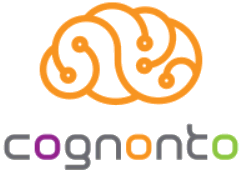 A Memorial Day and a Talk Got Me Thinking
A Memorial Day and a Talk Got Me Thinking
In the course of today’s activities, I came across a thoughtful commencement address at the U.S. Naval Academy by J.D. Vance. He stated to the graduating midshipmen and -women, “You’ll learn, as I have, that when people say things like Happy Memorial Day, you appreciate the sentiment behind it, but you know that it’s wrong because Memorial Day is not a happy day. And Memorial Day is not for those who served and came home. It is for those who served and didn’t.” That basic truth got me thinking.
So, what is a “memorial”? Clearly, there is a memory aspect to this, but it is also a representation for a class of things worth memorializing: births, deaths, life events like graduation, momentous occasions in our personal or community or learned history. The ‘what’ of what a memorial is seems to be pretty clear. It is the ongoing recognition for a memorable event. The ‘how’ is pretty clear, too. There is a time aspect to a memorial event, linked to a day or season that itself is the occasion — the trigger — for remembering the event.
OK, all of that seems pretty obvious. It is the ‘why’ something is memorialized, and what that memorial actually comes to represent, that is the fascinating question.
If we start with the standard memorials — births, deaths, weddings, graduations, anniversaries, and so on — these are (nearly) universal life events that have meaning directly for the individuals involved, but, because of their universality, are shared events nearly all humanity experiences. These memorials are occasions that trigger remembrances of those with and before us that are part of our lineage. These memorials reinforce a sense of continuity, based in a grounding of family and community, a sense universally shared across humanity. Memorials in these senses are reminders to remember those of importance to us. It seems like this kind of memorial is familial and evolutionary, tied to the truth of our lineage.
We also memorialize to honor, preserve, and process significant events, people, or truths that shape our lives. It’s a way we keep the past alive — whether it’s life events or sacrifices on behalf of the community. Memorials anchor us to meaning, giving us a tangible way to reflect on what matters: love, loss, courage, or freedom. Memorial events are not just about remembering but about feeling connected to something bigger, ensuring those moments or people aren’t forgotten. It helps us cement fleeting events arising from grief or change or times of elation, helping us to find how to express shared values. J.D. Vance’s point about Memorial Day hits this — correcting “Happy Memorial Day” underscores the day’s solemn truth: it’s for those who paid the ultimate price, not a casual celebration. We memorialize to stay grounded in those truths, to respect what’s sacred, and to carry forward lessons or legacies.
These truths are often specific (a soldier’s death, a couple’s union) but resonate as universal abstractions, such as courage, love, or commitment. A war memorial might honor a single battle but it symbolizes the broader idea of duty or loss. A wedding anniversary celebrates a couple’s commitment but reflects the universal value of fidelity.
So, memorializing seems to me to be a means for forcing remembrance, the recognition or retrieval of which becomes an abstraction into some fundamental truths. This is what gives Memorial Day and its many celebratory cousins their power: they honor universal truths that give our lives meaning. Some 1.3 million Americans across the decades have given their lives to preserve our way of life and our freedoms. We honor them for their sacrifice.









